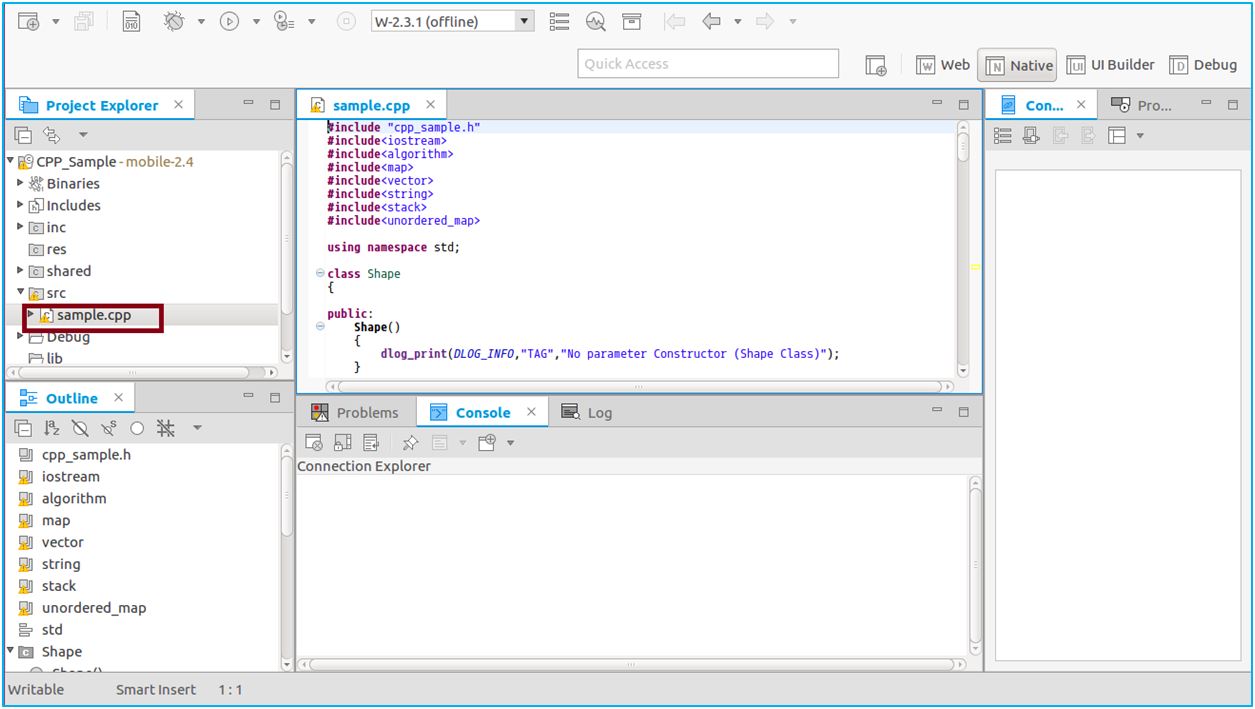How To Make A Data File In Dev C++
Ah, copying a file — something so simple, it happens all the time. Copy this file there; copy that file here. But what exactly takes place when you copy a file? You actually create a new file, and fill it with the same contents as the original file. And how do you do that?
Included is an extensive library of melodic patterns that intelligently adapt to match the key and tempo of your project.Auto-Motion has been greatly improved since EFX 3. Filter: a high-pass filter for EQ and special effects. Mutate: for ring modulated audio mutation. Antares auto tune efx 2 serial code. The Auto-Motion melodic pattern generator lets you create new melodic patterns and hooks by automatically pitch-shifting your original vocal or instrumental tracks.
'There doesn't seem to be GNU Make file in PATH or in Dev-C's Bin path. Please make sure that you have GNU Make and adjust Bin setting or system PATH environment variable and that make setting in Compiler Option contains correct filename, otherwise you will not be able to compile anything.' Reading and Searching in Txt file using Visual C; read from txt file using threads; Reading from.txt file into arrays in C? Help me code this problem in c c or java; read a file(txt) and run command in C; Read.txt File into C Object(s) for Some Simple Calculations; Read from txt file, get data as string; SIGSEGV in C. Jul 03, 2019 There are many header files present in C and C. Even we can create them according to our requirement. In order to access the Standard Library functions, certain header files in C/C need to be included before writing the body of the program. C/C Header File. Let’s have a look at these Header files in C and C.
How To Make A Data File In Dev C Online
- Well, it sounds like you have to read each and every byte from the first file, and write it to the second. Big-time yuck. But to make matters worse, copying a file means you have to make sure that you copy it exactly the same, that you don’t accidentally tack an extra 0 or two at the end of the file, or an extra carriage return or linefeed at the end of the file (which could happen when you.
- Mar 25, 2011 ok,lets,here we use Dev C to make header file. 1) Open the Dev c and Create new Console application and save it in new folder. 2) Now,time to the Write a Code. Ok, When you Create new Project than main.cpp file create by default, in this file Write following codes.
- Apr 18, 2018 Microsoft Visual C.NET or Microsoft Visual C 2005; Reading Text Files in Visual C Opening and reading files for read access is an important part of IO functionality, even if you do not need to write to the file in question. This example opens a file for reading. This is useful for reading text files but does not work for binary files.
Well, it sounds like you have to read each and every byte from the first file, and write it to the second. Big-time yuck.
But to make matters worse, copying a file means you have to make sure that you copy it exactly the same, that you don’t accidentally tack an extra 0 or two at the end of the file, or an extra carriage return or linefeed at the end of the file (which could happen when you copy a text file).
When all is done, the two files should be identical — not only contain the same information, but also be the same size.
And on top of all that, most good copy routines do even more! They give the new file a date that matches the date of the original file, and they will set all the attributes — including, say, read-only if the original is a read-only file. (If the file is read-only, then maybe you shouldn’t be able to copy it in the first place. . .)

Suddenly copying a file doesn’t sound so easy after all!
If you’re programming in Windows, you’re in luck! As long as you’re not using the ancient Windows 3.1, you get a CopyFile function! To get ready to use it, you include the line #include <windows.h> in your application. Then here’s all you have to do:
This copies from c:/dog.txt to c:/dog2.txt. But notice the final parameter: It’s the word TRUE in all capitals. What’s that? That’s a preprocessor macro defined somewhere in the bowels of the Windows header files.
You have to use either TRUE or FALSE when calling any of the Windows functions. That’s because in the old days of C, when the early versions of Windows were invented, no bool type existed. Those resourceful people of the late 20th century had to define their own TRUE and FALSE as integers (usually either 1 and 0, respectively, or 0 and 1, respectively).
And by the way, that final parameter in CopyFile tells the function what to do if the file you’re copying to already exists: TRUE means don’t overwrite the existing file; just abort. FALSE means overwrite it.
good day everyone, can somebody help me how to use text files in dev C++. we have a project for extra credit in school. Im making a currency exchange rate 1) view table 2)update the file(change currency rates) 3) make conversions(using the file if possible) . im just a newbie learning new things :( TIA
- 2 Contributors
- forum 1 Reply
- 2,653 Views
- 9 Minutes Discussion Span
- commentLatest Postby rproffittLatest Post
Example Of Data File
rproffitt1,693
.data File Extension
Let's watch https://stackoverflow.com/questions/47072700/global-currency-converter too.